 |
||||
|
Feminist Film Theory
Feminist Criticism of Film
By Anneke Smelik. Introduction Feminism is a social movement which has had an enormous impact on film theory and criticism. Cinema is taken by feminists to be a cultural practice representing myths about women and femininity, as well as about men and masculinity. Issues of representation and spectatorship are central to feminist film theory and criticism. Early feminist criticism was directed at stereotypes of women, mostly in Hollywood films (Haskell 1973/1987, Rosen 1973). Such fixed and endlessly repeated images of women were considered to be objectionable distortions which would have a negative impact on the female spectator. Hence, the call for positive images of women in cinema. Soon, however, the insight dawned that positive images were not enough to change underlying structures in film. Feminist critics tried to understand the all-pervasive power of patriarchal imagery with the help of structuralist theoretical frameworks such as semiotics and psychoanalysis. These theoretical discourses have proved very productive in analysing the ways in which sexual difference is encoded in classical narrative. For over a decade psychoanalysis was to be the dominant paradigm in feminist film theory. More recenty there has been a move away from a binary understanding of sexual difference to multiple perspectives, identities and possible spectatorships. This opening up has resulted in an increasing concern with questions of ethnicity, masculinity and hybrid sexualities. Classical Film Narrative Claire Johnston was among the first feminist critics to offer a sustained critique of stereotypes from a semiotic point of view (1973/1991). She put forward how classical cinema constructs the ideological image of woman. Drawing on Roland Barthes' notion of 'myth', Johnston investigated the myth of 'Woman' in classical cinema. The sign 'woman' can be analyzed as a structure, a code or convention. It represents the ideological meaning that 'woman' has for men. In relation to herself she means no-thing (1991: 25): women are negatively represented as 'not-man'. The 'woman-as woman' is absent from the text of the film (26). The important theoretical shift here is from an understanding of cinema as reflecting reality, to a view of cinema as constructing a particular, ideological, view of reality. Classical cinema never shows its means of production and is hence characterized by veiling over its ideological construction. Thus, classical film narrative can present the constructed images of 'woman' as natural, realistic and attractive. This is the illusionism of classical cinema. In her groundbreaking article 'Visual Pleasure and Narrative Cinema' (1975/1989), Laura Mulvey uses psychoanalysis to understand the fascination of Hollywood cinema. This fascination can be explained through the notion of scopophilia, the desire to see, which is a fundamental drive according to Freud. Sexual in origin, like all drives, der Schautrieb is what keeps the spectator glued to the silver screen. Classical cinema, adds Mulvey, stimulates the desire to look by integrating structures of voyeurism and narcissism into the story and the image. Voyeuristic visual pleasure is produced by looking at another (character, figure, situation) as our object, whereas narcissistic visual pleasure can be derived from self-identification with the (figure in the) image. Mulvey has analyzed scopophilia in classical cinema as a structure that functions on the axis of activity and passivity. This binary opposition is gendered. The narrative structure of traditional cinema establishes the male character as active and powerful: he is the agent around whom the dramatic action unfolds and the look gets organized. The female character is passive and powerless: she is the object of desire for the male character(s). In this respect, cinema has perfected a visual machinery suitable for male desire such as already structured and canonized in the tradition of Western art and aesthetics. Mulvey has disentangled the ways in which narrative and visual techniques in cinema make voyeurism into an exclusively male prerogative. Within the narrative of the film male characters direct their gaze towards female characters. The spectator in the theatre is made to identify with the male look, because the camera films from the optical, as well as libidinal, point of view of the male character. There are thus three levels of the cinematic gaze (camera, character and spectator) that objectify the female character and make her into a spectacle. In classical cinema, voyeurism connotes women as 'to-be-looked-at-ness' (1989: 19). Mulvey tackles narcissistic visual pleasure with Lacan's concepts of ego formation and the mirror stage. The way in which the child derives pleasure from the identification with a perfect mirror image and forms its ego ideal on the basis of this idealized image, is analogous to the way in which the film spectator derives narcissistic pleasure from identifying with the perfected image of a human figure on the screen. In both cases, however, during the mirror stage and in cinema, identifications are not a lucid form of self-knowledge or awareness. They are rather based on what Lacan calls 'méconnaissance' (a 'mis-recognition'), that is to say they are blinded by the very narcissistic forces that structure them in the first place. Ego formation is structurally characterized by imaginary functions. And so is cinema. At about the same time as Christian Metz worked on this analogy in his essays on psychoanalysis and cinema, Mulvey argued that cinematic identifications were structured along the lines of sexual difference. Representation of 'the more perfect, more complete, more powerful ideal ego' (20) of the male hero stands in stark opposition to the distorted image of the passive and powerless female character. Hence the spectator is actively made to identify with the male rather than with the female character in film.
In the case of fetishism, classical cinema reinstates and displaces the lacking penis in the form of a fetish, that is, a hyper-polished object. Mulvey refers here to Josef Sternberg's fetishisation of Marlene Dietrich. Marilyn Monroe is another example of a fetishised female star. Fetishizing the woman deflects attention from female 'lack' and changes her from a dangerous figure into a reassuring object of flawless beauty. Fetishism in cinema confirms the reification of the female figure and thus fails to represent 'Woman' outside the phallic norm. The notion of 'the male gaze' has become a shorthand term for the analysis of complex mechanisms in cinema that involve structures like voyeurism, narcissism and fetishism. These concepts help to understand how Hollywood cinema is tailor-made for male desire. Because the structures of Hollywood cinema are analyzed as fundamentally patriarchal, early feminists declared that a woman's film should shun traditional narrative and cinematic techniques and engage in experimental practice: thus, women's cinema should be a counter cinema. A Feminist Counter Cinema What should a feminist counter cinema look like? For Mulvey, feminist cinema was to be an avant-garde film practice which would 'free the look of the camera into its materiality in time and space and the look of the audience into dialectics and passionate detachment' (Mulvey 1989: 26). That such a counter cinema would destroy the visual pleasure of the spectator was no problem for women; according to Mulvey they would view the decline of classical film narrative with nothing more than 'sentimental regret' (1989: 26). Feminist counter cinema took its inspiration from the avant-garde in cinema and theater, such as the montage techniques of Sergei Eisenstein, the notion of 'Verfremdung' (distantiation) of Bertolt Brecht and the modernist aesthetic of Jean Luc Godard. As such it was very much part of the 1970s political filmmaking. The privileged examples of feminist counter cinema are Chantal Akerman's Jeanne Dielman, 23 Quai du Commerce, 1080 Bruxelles (Belgium 1975), Laura Mulvey and Peter Wollen's Riddles of the Sphinx (GB 1977) and Sally Potter's Thriller (GB 1979). It is interesting to note that the radical films of Marguërite Duras have drawn much less attention from Anglophone feminist film critics. Important American experimental films are Yvonne Rainer's Lives of Performers and Film About a Woman Who... (USA 1972 and 1974) and Sigmund Freud's Dora (made by Tyndall, McCall, Pajaczkowska and Weinstock, USA 1979).
How does feminist counter cinema avoid the conventions of classical cinema and how does it accomodate a female point of view? In the short experimental film Thriller, for example, this is achieved by deconstructing a classical melodrama, Puccini's opera La Bohème (1895). The film splits the female character into two: Mimi I, who is placed outside of the narrative in which she is the heroine, Mimi II. The first Mimi investigates how she is constructed as an object in the melodramatic narrative. According to Ann Kaplan (1983), the investigation is both psychoanalytic and Marxist-materialist. On the psychoanalytic level Mimi I learns how the female subject is excluded from male language and classical narrative. The only position she can occupy is that of asking questions: 'Did I die? Was I murdered? What does it mean?' On the Marxist-materialist level Mimi I learns to investigate Mimi II's role as a seamstress and as a mother. As in Potter's second film, The Golddiggers (GB 1980) it is a woman of colour with a deep French-accented English voice (Colette Lafont), who does the critical questioning of the patriarchal image of white womanhood. Thus, in both films it is the 'foreign' female voice that speaks the discourse of theory and criticism. Thriller communicates these theoretical discourses both visually and acoustically. The sound track includes the dominant female voice, as well as a repeated laugh, a repeated shriek and the sound of a heartbeat. These are typical components of the classical thriller and horror genres, while the film narrative does not give rise to any such suspense. Instead, it refocuses the attention of the spectator on the enigmas surrounding the female subject in classical discourse. Thriller deliberately violates conventional realist codes. The melodramatic story is partly told in shots which are pictures of phographs of a stage performance, and partly in reconstructed scenes in which the actors move in highly stylized movements. Another visual device is the use of mirrors. For Kaplan, the play with repeated and jarring mirror shots illustrate the mental processes that Lacan's mirror phase involves psychoanalytically. For example, when Mimi I recognises herself as object her shadow is thrown up on the screen. Mimi I is then shown with her back to the mirror, facing the camera. This image is repeated in a series of mirrors behind her (instead of 'correctly' reflecting the back of her head). For Kaplan, this complex shot signals Mimi I's recognition of her split subjectivity. The investigation leads the women to understand they are not split in themselves, nor should they be split narratively. The film ends symbolically with both Mimi's embracing.
|
|
|||
|
|
||||
|
Feminist counter cinema did not only pertain to fictional film, but also to documentary. The problems of finding an appropriate form and style were maybe even more acute for documentary film, because traditional documentary uses illusionism and realism to capture the 'truth' or 'reality'. For many feminist filmmakers in the 1970s, this idealism was unacceptable. It could not include self-reflexivity, one of the starting points of feminist film practice. Feminist documentary should manufacture and construct the 'truth' of women's oppression, not merely reflect it (Johnston 1983). However, other voices were also heard. Because many stylistically traditional documentaries have been important historical documents for the women's movement, this kind of feminist formalism was questioned. Alex Juhasz criticised this kind of orthodoxy, which proscribed anti-illusionist techniques undermining identification. She points to the paradox that the unified subject which was represented in early feminist documentaries , presented the feminist viewer in fact with a 'radical, new and politicized reinterpretation of that female subjectivity, one which mobilized vast numbers of women into action for the first time' (1994: 174). We witness a theoretical contradiction of feminism here: while feminists need to deconstruct the patriarchal images and representations of 'Woman', they historically need to establish their female subjectivity at the same time. That is to say, they have to find out and redefine what it means to be a woman. A relentless formalism may be too much of a onesided approach to the complex enterprise of (re)constructing the female subject. Counter cinema represents only a small fraction of the many films produced by women since the mid 1970s. Yet, these experimental films have been overpraised for their subversive powers while realist women's films were overcriticised for their illusionism (see Kuhn 1982 and Kaplan 1983). The suspicion of collusion cast on realist or narrative film has resulted in either a concentration of critical efforts on classical Hollywood cinema or in a largely unjustified acclaim of experimental women's cinema among the elected few who get to see it. This has resulted in a paradoxical neglect of contemporary popular films made by women for a wider audience; a lack of academic attention which continued long into the 1980s and even 1990s (see for a reappraisal of narrative feminist cinema Humm 1997 and Smelik 1998). Teresa de Lauretis (1984, 1987) was among the first to claim that feminist cinema should not destroy narrative and visual pleasure, but rather should be 'narrative and Oedipal with a vengeance' (1987: 108). According to her, feminist cinema in the 1980s should define 'all points of identification (with character, image, camera) as female, feminine, or feminist' (1987: 133). The Female Spectator
It was not until the end of the decade before female spectatorship was theorized outside the dichotomous categories of psychoanalytic theory. An account of female spectatorship in all its cultural contexts and multiple differences was then undertaken in a special issue of Camera Obscura, entitled 'The Spectatrix' (1989: nos 20-21). The editors Janet Bergstrom and Mary Ann Doane chose to give a comprehensive survey of international research on and theories of the female spectator in film and television studies.
It has become a general assumption of feminist film theory that female spectators are more fluid in their capacity to identify with the other gender. For example, in her study of the fan phenomenon, Miriam Hansen (1991) has used the idea of spectatorial flexibility to explain why women in the 1920s were drawn to the feminine positioning of Rudolph Valentino. This spectatorial transvestism of the woman viewer points to a female masquerade. The concept of masquerade was first introduced into feminist film theory by Johnston (1975) in her analysis of Jacques Tourneur's Anne of the Indies (1951). The notion of masquerade was inspired by the role of the female character who cross-dressed as a male pirate. For Johnston the female masquerade signified not only a masking but also an 'unmasking' in the deconstructionist sense of exposing and criticising. Mary Ann Doane (1982/1991) explored the notion of masquerade further to understand woman's relation to the image on the screen. Drawing on the psychoanalytic work of Joan Rivière, Doane understands the masquerade, not as cross-dressing, but on the contrary as a mask of femininity. Rivière had noticed in her clinical observations that women who find themselves in a male position of authority put on a mask of femininity that functions as compensation for their masculine position. How does this concept of the masquerade relate to issues of identification and spectatorship? As we have seen, the male gaze involves voyeurism. Voyeurism presupposes distance. Doane argues that the female spectator lacks this necessary distance because she is the image. Femininity is constructed as closeness, as 'an overwhelming presence-to-itself of the female body' (22). The female spectator can adopt 'the masochism of over-identification' or 'the narcissism entailed in becoming one's own object of desire' (31-32). Doane argues that the female spectator is consumed by the image rather than consuming it. This position can be avoided not only through a transsexual identification, but also through the masquerade. The masquerade is effective in that it manufactures a distance from the image. By wearing femininity as a mask, the female spectator can create the necessary difference between herself and the represented femininity on the screen. In a study of the Woman's film of the forties, Doane (1987) returns to the rather negative ways in which Hollywood constructs female identification and subjectivity. For Doane, the female spectator of those melodramas is involved in emotional processes like masochism, paranoia, narcissism and hysteria. The Woman's film, in spite of its focus on a female main character, perpetuates these processes and thus confirm stereotypes about the female psyche. The emotional investments of the viewer lead to overidentification, destroying the distance to the object of desire and turning the active desire of both the female character and the female spectator into the passive desire to be the desired object. Mere 'desire to desire' seems to be, then, the only option for women.
Do these rather dire interpretations of female spectatorship imply that the female look is impossible and that the look or gaze is necessarily male? In the early 1980s this seemed the case in feminist theory. In her analysis of Hollywood woman's films of the 1970's and 1980's, Ann Kaplan (1983) argues that female characters can possess the look and even make the male character the object of her gaze, but being a woman her desire has no power. The neo-feminist Hollywood movies involve a mere reversal of roles in which the underlying structures of dominance and submission are still intact. The gaze is not essentially male, 'but to own and activate the gaze, given our language and the structure of the unconscious, is to be in the "masculine" position' (30).
The difficulties of theorizing the female spectator made Jackie Stacey (1987) exclaim that feminist film critics have written the darkest scenario possible for the female look as being male, masochist or marginal. There have been some different voices, however. Gertrud Koch (1980) is one of the few feminists who early on recognized that women could also enjoy the image of female beauty on the screen. Especially the vamp, an image exported from Europe and integrated into Hollywood cinema, provides the female spectator with a positive image of autonomous femininity. Koch argues that the image of the vamp revives for the female spectator the pleasurable experience of the mother as the love object in early childhood. Moreover, the sexual ambivalence of the vamp, of for example Greta Garbo and Marlene Dietrich, allows for a female homo-erotic pleasure which is not exclusively negotiated through the eyes of men. In Koch's view the vamp is a phallic woman rather than a fetishized woman, as she offers contradictory images of femininity which go beyond the reifying gaze. The vamp's ambiguity can be a source of visual pleasure for the female spectator. The disappearance of the vamp in cinema, therefore, means a great loss of possible identifications and visual pleasure for the female audience. A similar focus on the pre-oedipal phase and on the mother as love object and potential source of visual pleasure has been developed by Gaylyn Studlar (1988), though from a very different angle. Analyzing films made by Josef von Sternberg starring Marlene Dietrich, she investigates the Deleuzian notion of masochism. Deleuze views masochism as the desire of the male to merge with the mother and subvert the father's phallic law. Its violence is contractual and consensual, in a way that sadism is not. Sadism is negates difference of the mother and exults in the power of the father. Studlar argues that visual pleasure in cinema resembles more the psychic processes of masochism than of sadism. Cinema evokes the desire of the spectator to return to the pre-oedipal phase of unity with the mother, and of bisexuality. The female spectator can thus identify with and draw pleasure from the powerful femme fatale in cinema. This is a sort of re-enactment of the symbiosis through which the spectator wishes to subject her- or himself to the powerful mother image. The condition of this active masochistic desire is that it be suspended, which is achieved by means of performance and masquerade on the part of the female character. These ritualizations of fantasy keep desire under control. For Studlar the masquerade serves as a defensive strategy for women, by which they deflect and confuse the male gaze. She thus creates a place for the pleasure and desire of the female subject-spectator, albeit the pleasurable pain of desire.
The question of female spectatorship and the female look circle around the issue of subjectivity. Female subjectivity has been explored not only in relation to spectatorship, but also with respect to the narrative structure of film. One of the key figures in this field is Teresa de Lauretis, who examined the structural representations of 'woman' in cinema (1984, 1987). De Lauretis (1984) emphasizes that subjectivity is not a fixed entity but a constant process of self-production. Narration is one of the ways of reproducing subjectivity; each story derives its structure from the subject's desire and from its inscription in social and cultural codes. Narrative structures are defined by oedipal desire, which should be understood as both a socio-political economy dominated by men's control of women and as a way of emphasizing the sexual origin of subjectivity. Sexual desire is bound up with the desire for knowledge, that is, the quest for truth. The desire to solve riddles is a male desire par excellence, because the female subject is herself the mystery. `Woman' is the question and can hence not ask the question nor make her desire intelligible. In Hitchcock's Vertigo (1958), for example, Scottie's desire for the enigmatic Judy/Madeleine structures the narrative of the film. Narrative is not oedipal in content but in structure, by distributing roles and differences, and thus power and positions. One of the functions of narrative, de Lauretis argues, is to 'seduce' women into femininity with or without their consent. The female subject is made to desire femininity. This is a cruel and often coercive form of seduction. Here de Lauretis turns Mulvey's famous phrase around: not only does a story demand sadism; sadism demands a story. She refers to the ways in which the female characters in Vertigo, but also in a 'woman's film' like Rebecca (also by Hitchcock, 1940), are made to conform to the ideal image that the man has of them. The function of portraits of female ancestors in both films is highly significant in this respect: they represent the dead Mother, the ideal that the male hero desires to have and forces upon the female heroine. For de Lauretis the desire of the female character is impossible and the narrative tension is resolved by the destruction (Judy/Madeleine) or territorialization of women (the new Mrs. de Winter). Desire in narrative is intimately bound up with violence against women and the techniques of cinematic narration both reflect and sustain social forms of oppression of women. De Lauretis is hardly more optimistic than Mulvey about the female spectator. Not that she assumes identification to be single or simple; femininity and masculinity are identifications that the subject takes up in a changing relation to desire. De Lauretis distinguishes two different processes of identification in cinema. The first set is an oscillating either/or identification. It consists of a masculine, active identification with the gaze (Scottie) and a passive, feminine identification with the image (Judy/Madeleine). The second set is a simultaneous both/and identification. It consists of the double identification with the figure of narrative movement (the protagonist, the new Mrs. de Winter in Rebecca) and with the figure of narrative image (here the image of Rebecca). This set of figural identifications enables the female spectator to take up both the active and passive positions of desire: 'Desire for the other, and desire to be desired by the other' (143). This double identification may yield a surplus of pleasure, but it is also the very operation by which a narrative solicits the spectators' consent and seduces women into femininity. The notion of the female subject, then, seems to be a contradiction in terms, so much so that de Lauretis sometimes refers to the female subject as a 'non-subject' (1985: 36). 'Woman' is fundamentally unrepresentable as subject of desire; she can only be represented as representation (1987: 20). Feminist theory is built on the very paradox of the unrepresentability of woman as subject of desire, and historical women who know themselves to be subjects. For de Lauretis, the self-conscious experience of being both 'woman' and 'women' is the productive contradiction of feminism. Women's films like Les Rendez-vous d'Anna or Jeanne Dielman by Chantal Akerman, Thriller by Sally Potter, or Sigmund Freud's Dora: A Case of Mistaken Identity by Tyndall, McCall, Pajaczkowska and Weinstock, are her privileged examples of films which explore and explode that very contradiction. Female desire A feminist critic who has also approached the question of female desire within psychoanalytic discourse is Kaja Silverman (1988). Drawing on Lacanian psychoanalysis, Silverman argues that each subject is structured by lack or symbolic castration. In Western culture it is, however, the female subject who is made to bear the burden of that lack in order to provide the male subject with the illusion of wholeness and unity. Silverman suggests that in cinema this displacement is enacted not only through the gaze and the image but also through the auditory register. Contrary to the more frequent disembodiment of the male voice in cinema, the female voice is restricted to the realm of the body. This amounts to keeping it outside discourse. The female voice can hardly reach a signifying position in language, meaning or power and is hence all too easily reduced to screams, babble or silence in dominant cinema. Silverman discusses the cultural fantasy of the maternal voice that surrounds the infant like an acoustic blanket. This fantasy for the maternal enclosure negatively signifies the fear of being swallowed up by the mother, whereas it positively signifies a regression to the state of harmony and abundance when mother and child are still one. Silverman argues that both these fantasies equate the maternal voice to pure sound and deny the mother any cultural role as a discursive agent. In her rereading of psychoanalysis Silverman attempts to make room for the mother and for female desire within discourse and the symbolic order. Reinterpreting Freud's account of the psychological development of the little girl, Silverman puts great emphasis on the signifying role of the mother in early childhood. The entry into language means the end of the unity between mother and child as well as of an unmediated access to reality. The loss and separation entailed by the acquisition of language lead the child to desire the mother. The girl redirects her desire to the mother in what is called the negative Oedipus complex. This can only happen after the pre-oedipal stage, because distance from the mother is necessary for her to be constructed as an erotic object for the daughter. Silverman thus recuperates female desire for the mother as fully oedipal, that is to say within the symbolic order, within language and signification. It is after the event of the castration crisis, the dramatic onset of sexual difference, that the girl leaves the negative Oedipus complex and enters the positive Oedipal phase, learning to redirect her desire to the father. For the rest of her life the female subject remains split between the desire for the mother and for the father. The two desires are the site of a constitutive contradiction and are consequently irreconcilable. For Silverman, the daughter's erotic investment in the mother can be a subversive force for a 'libidinal politics' because it is a form of desire which is opposed to the normative desire for the father. Silverman emphasizes the negativity of the female negative Oedipus complex as a political potential. She argues that it is paramount for feminism to draw on the libidinal resources of the 'homosexual-maternal fantasmatic' (125). Silverman also revises the traditional view on the divergence of identification and desire. In her view these two psychic paradigms are not always mutually exclusive and can actually coalesce. In the negative Oedipus complex the girl both identifies with and desires the mother, while the father figures neither as an object of desire nor of identification: for the girl he is merely 'a troublesome rival' (Freud quoted in Silverman: 153). In this stage of development the girl forms her identity through the incorporation of the mother's imago; she both wishes to possess and to be the mother. There is then a conjunction of identification and eroticism, which Silverman believes to have a vital relation to female narcissism. For her, feminism's libidinal struggle against the phallus lies in the intersection of desire for and identification with the mother. In Silverman's reading, a fantasy for the maternal enclosure is the organizing principle of Riddles of the Sphinx (Laura Mulvey and Peter Wollen, 1977). In this experimental film, the figure of the Sphinx occupies the position of an 'imaginary narrator', a distinctly fictionalised voice-over. This disembodied voice speaks a wide variety of discourses about motherhood, from psychoanalysis to feminist politics, thus firmly establishing the maternal voice within the symbolic order. The film is centered upon the female desire to recover the Oedipal or symbolic mother, represented by the Sphinx. Riddles springs off from the mother/daughter relationship, of Louise and her child Anna. The maternal fantasy can be found not only in the pre-Oedipal dyad, but also in the homosexual-maternal mÉnage trois of mother, grandmother and child. The film opens this maternal enclosure up to a feminist community of women, including Louise's friend Maxine, and the voice and work of artist Mary Kelly. This female collectivity, like female subjectivity is based upon the passionate desire for the mother.
Although feminists have not always agreed about the usefulness of pyschoanalysis, there has been general agreement about the limitations of an exclusive focus on sexual difference. One such limitation is the reproduction of a dichotomy, male/female, that needs to be deconstructed. The fear was that this binary opposition would somehow tie questions of pleasure and identification to anatomical difference. Especially within Amerian feminism the term sexual difference was therefore replaced by a renewed interest in the sex/gender distinction that Gayle Rubin had introduced in 1975. The term gender generally seemed to indicate a clearer distinction between anatomy (sex) and social construction (gender), and equally between sexual practice and gender identity. Another limitation of the exclusive focus on sexual difference within psychoanalytic film theory is its failure to focus on other differences such as class, race, age and sexual preference. Lesbian feminists were among the first to raise objections to the heterosexual bias of psychoanalytic feminist film theory. Indeed, feminist film theory - not unlike the Hollywood cinema it criticised so fiercely - seemed unable to conceive of representation outside heterosexuality. The journal Jump Cut wrote in its special issue on Lesbians and Film (1981, no 24/25): 'It sometimes seems to us that lesbianism is the hole in the heart of feminist film criticism' (p. 17). Apparently, almost ten years later matters had improved very little, as Judith Mayne (1990, 1994) complains that the denial of the lesbian identity of Hollywood director Dorothy Arzner points to a curious gap in feminist film theory, indeed to the 'structuring absence' of lesbianism (1994: 107). As Patricia White (1991) observes, the 'ghostly presence of lesbianism' does not only haunt Hollywood gothics but also feminist film theory. In spite of the increasing focus on female spectatorship in feminist scholarship, the homosexual pleasures of the female spectator were indeed largely ignored. Yet, it is interesting to know what happens for the female specator when a classical narrative features two female characters. This question arose as early as Julie Lesage's (1980) pioneering analysis of the improvisational interplay of the two female characters in Jacques Rivette's Celine and Julie Go Boating (France 1974). She shows that the abandonment of the classical story based on male/female distinctions produces new and previously unimaginable narrative permutations.
De Lauretis (1988) has drawn attention to the difficulties of imagining lesbian desire within a psychoanalytic discourse that predicates sexual difference on sexual indifference. She here follows Luce Irigaray's notion of the symbolic law representing only one and not two sexes: patriarchy is deeply 'hommo-sexual' as it erects the masculine as the one and only norm. Discussing the same problematic in a later essay, de Lauretis (1991) observes that the institution of heterosexuality defines all sexuality to such an extent that is difficult to represent homosexual-lesbian desire. She criticizes both Stacey and Silverman for conceiving of desire between women as woman-identified female bonding and failing to see it as sexual. Here, and more extensively in her later book The Practice of Love (1994), de Lauretis returns to Freudian theory to account for the specificity of lesbian desire in terms of fetishism. In answer to de Lauretis' criticism Stacey (1994) argues in her study of female spectatorship that she is not concerned with a specifically lesbian audience but with a possible homo-eroticism for all women in the audience. Her point is not to de-eroticise desire, but to look for ways in which a film may eroticise identification. The female spectator is quite likely to encompass erotic components in her desiring look, while at the same time identifying with the woman-as-spectacle. The homo-erotic appeal of female Hollywood stars has indeed been widely recognised. Weiss (1992), for example, discusses the attraction of Hollywood stars for lesbian spectators in the thirties. Especially the androynous appearances of Marlene Dietrich in Morocco (USA 1930), Greta Garbo in Queen Christina (USA 1933) and Katherine Hepburn in Sylvia Scarlett ( USA 1935) were embraced as an image of a gender-in-between and of sexual ambiguity. The star image of sexual androgyny served as point of identification outside conventional gender positions. While these discussions of lesbian spectatorship are part of a wider movement in film studies to include the heterogeneity of the spectatorial situation, most discussions of spectatorship have been about white audiences. De Lauretis was criticized for not taking into account racial dynamics in the lesbian film She Must Be Seeing Things (USA 1987) (see the discussion following de Lauretis' 1991 article). The issue of black lesbian spectatorship has so far hardly been raised. The collection Queer Looks (Gever et al, 1993) addresses the combination of racial difference and homosexuality, but it focuses more on gay and lesbian filmmaking than on spectatorship as such.
The shift away from the restrictive dichomomies of psychoanalytic feminist film theory, has resulted in a more historical and cultural criticism of cinema by gay and lesbian critics. This involved rereadings of Hollywood cinema, for example of the implicit lesbianism of the female buddy film. In order to avoid that 'danger' Hollywoodfilms often include explicit scenes of denying any lesbian intent. In Julia (USA 1977) Jane Fonda slaps a man in the face who suggests that her friendship with Julia (Vanessa Redgrave) was sexual. Other films put a 'real' lesbian in the story as a way of showing that the female friendship of the two heroines is not 'that way' (Girlfriends, USA 1978). In some films the female buddies, however, become lovers, as in Lianna (USA 1982) and Personal Best (USA 1982). Several critics have pointed out that the lesbian subject matter of these films is acceptable to all kinds of audiences, because its eroticism feeds into traditional male voyeurism (Linda Williams 1986, Mandy Merck 1993). Ellsworth (1990) investigated lesbian responses to the film and found that many lesbian spectators actively rewrote the film by imagining a different ending. Her research shows that lesbian spectators use interpretive strategies to challenge the dominant reading of a film. The theme of lesbianism still runs strong in more recent female buddy films. Fried Green Tomatoes(USA 1991) is one of those films about female friendship in which lesbianism remains unspoken, although it is a source of strength and inspiration. In Thelma and Louise (USA 1991) the lesbian attraction between the women can only be expressed in a kiss on the mouth just before the leap to their death into the Grand Canyon. Basic Instinct (USA 1991) features lesbian and bisexual characters as pathological killers, harping back on the time-old association in Hollywood films of lesbianism with death and pathology. What else is new? Angela Galvin (1994) suggests that the novelty may well lie in the heroine's absence of a mustache. The controversy over Thelma and Louise and Basic Instinct shows some of the various responses of feminist and lesbian criticism. While the films have been criticised for their reactionary representation of strong women and for their exploitation of voyeuristic themes, some spectators have appropriated them as 'lesbian films', enjoying images of empowered women who escape the Law (Tasker 1993, Graham 1995). Alongside rereadings of Hollywood films gay and lesbian criticism turned to films made by lesbians and gay men. Early films of European art cinema were rediscovered, such as Mädchen in Uniform (Girls in Uniform, Germany 1931). Rich (1984) argues that the anti-fascist politics of Mädchen in Uniform is interconnected with its lesbian theme and its struggle against authoritarian structures and sexual repression. Rich places the film in the historical context of Weimar with its vibrant lesbian subculture, especially in Berlin. Mädchen in Uniform does not stand alone but is part of a tradition of gay and lesbian filmmaking within early cinema (see Dyer 1990, Weiss 1992). Other films were made by gay or lesbian filmmakers, like the surrealist shorts of Germaine Dulac. Her films have been read as critiques of heterosexuality (Flitterman-Lewis, 1990). Fantasy plays an important role in these experimental films. In La Souriante Madame Beudet (The Smiling Mme Beudet, France 1923) a woman fantasizes murdering her bully of a husband and escaping from her bourgeois marriage, and La Coquille et le Clergyman (The Seashell and the Clergyman, France 1927) exposes Oedipal male fantasies about the mystery of 'Woman'. Jean Genet's prison film Un Chant d'Amour (A Song of Love, France 1950) is a classic which has become enormously popular with gay audiences until today and which also has influenced gay filmmakers. Dyer (1990) discusses the film's eroticism in terms of the tension between politics and pleasure. While some gay critics have reprimanded the film for its 'oppression' of gay men or were disturbed by its 'homophobic' representation of erotic pleasures, others took a more permissive or even celebratory attitude to the sadomasochism of the film. Dyer argues that the renewed political interest in perverse sexualities opened a Foucauldian reading of the film's eroticism in terms of the social and historical relation between sexuality and power. The play of power and desire has become the theme of some gay and lesbian films in the eighties, which Dyer calls a 'Genetesque' tradition. A ritualization of power and desire can for example be found in the sadean theatre of Verführung: die grausame Frau (Seduction: the Cruel Woman, Germany 1985) by Elfi Mikesch and Monika Treut. This highly formalised and estheticised exploration of sadomasochism was one of the first films to bring female desire and lesbian sexuality within the domain of power and violence. Another filmmaker that must be mentioned in this context is Ulrike Ottinger, whose fantasmatic films from Madame X - eine absolute Herrscherin (Madame X - an Absolute Ruler, Germany 1977) to Johanna D'Arc of Mongolia (Germany 1989) humorously deconstruct traditional femininity and perversely celebrate nomadic lesbian subjectivities (White 1987, Longfellow 1993). These films are very different from the lesbian romance, Desert Hearts (USA 1985), which is to date still the only lesbian independent feature which made use of Hollywood conventions and was a box office success. As Jackie Stacey (1995) points out, the film, quite surprisingly, was not followed by other successful lesbian romances nor did it receive much academic attention. She suggests that this may have to do with the popluar lesbian romance film being 'a virtual contradiction in terms' (112). The film has, however, remained popular with lesbian audiences.
Persistent critique of psychoanalytic film theory has also come from black feminism, who criticised its exclusive focus on sexual difference and its failure to deal with racial difference. Jane Gaines (1988) is one of the first feminist critics to point to the erasure of race in film theories that are based on the psychoanalytic concept of sexual difference. She pleads for an inclusion of black feminist theory and of a historical approach into feminist film theory in order to understand how in cinema gender intersects with race and class. White film critics have universalised their theories of representations of women, while black women have been excluded from those very forms of representation. The signification of the black female as non-human makes black female sexuality the great unknown in white patriarchy, that which is 'unfathomed and uncodified' and yet 'worked over again and again in mainstream culture because of its apparent elusiveness' (Gaines 1988: 26). The eruptive point of resistance present black women's sexuality as an even greater threat to the male unconscious than the fear of white female sexuality. The category of race also problematises the paradigm of the male gaze possessing the female image. The male gaze is not a universal given but it is rather negotiated via whiteness: the black man's sexual gaze is socially prohibited. Racial hierarchies in ways of looking have created visual taboos, the neglect of which reflects back on film theory, which fails to account for the ways in which some social groups have the licence to look openly, while others can only `look' illicitly. The racial structures of looking also have repercussions for structures of narrative. Gaines discusses the construction of the black man as rapist, while in times of slavery and long after, it was the white man who raped black women. The historical scenario of interracial rape explains much of the penalty of sexual looking by the black man, who was actually (rather than symbolically) castrated or lynched by white men. For Gaines this scenario of sexual violence, repression and displacements rivals the oedipal myth. Interventions such as Gaines' show that the category of race reveals the untenability of many one-sided beliefs within feminist film theory, and points to the necessity of contextualising and historicising sexual difference. Thus, Lola Young (1996) examines the representation of black female sexuality by situating British films in their historical and social context. Intersecting theories of sexual difference with those of differences of race and sexual preference, along with ethnicity and class, will eventually make other forms of representation thinkable, although Young argues convincingly that white and black filmmakers find it hard to challenge stereotypical images of black women. Almost simultaneously with Young's book a special issue of Camera Obscura (nr. 36) was published, which focused on 'Black Women, Spectatorship, and Visual Culture'. In her reading of Neil Jordan's films Mona Lisa and The Crying Game Joy James comes to a very similar critique as Young: these films fail to fulfill the promise of transgressive relationships and ultimately reproduce stereotypes of black female sexuality. Deborah Grayson examines the iconic representation of black women's hair in visual culture. Looking at diverse media and popular practices (e.g. dolls), she identifies the racialized signification of hair within American health and beauty culture. In a similar vein, Marla Shelton analyzes the cross-over stardom of Whitney Houston. While Shelton celebrates Houstons' successful construction of her own image and formation of different audiences, she points to the inherent conflicts that converge around this 'rainbow icon'. For example, Houston has found it hard to escape negative interpretations of her sexuality and of her role as a wife and mother. And while she has always had enormous cross-over appeal, according to Shelton, in more recent years Houston had to embrace and express her blackness in order to maintain a large audience. Generally, little research has been available about black audiences. One of the exceptions is the work of Jacqueline Bobo (1995) on Steven Spielberg's The Color Purple (1985). The film was attacked in the black press for its racism. Yet, this critical view is mixed with reports of black spectators who found the film empowering. Bobo set out to research this apparent contradiction and interviewed a group of black women. The black female spectators were quite unanimously impressed by the film - 'Finally, somebody says something about us' - and felt strengthened by the triumph of the female protragonist Celie. They thought the criticism of the film (and also of Alice Walker's novel), particularly on the part of black men, quite unjustified. The women do recognise that the film continues the tradition of racist representations of blacks; Spielberg's interpretation of Sofia and Harpo is not considered to be successful. However, Bobo argues that, as black spectators, the women are by sheer necessity used to filtering out offensive racist images from what they see in cinema. The women negotiated their appreciation of the film through their personal history and past viewing experience. Moreover, Bobo found that certain technical aspects of the film contributed to spectatorial pleasure: The Color Purple introduced an innovative way of photographing black people so that they stood out agaist the background. This photographic technique made black people appear more distinctly on the screen than in the cinematic tradition of Hollywood.
A search for an oppositional subjectivity can also be found in the practice of filmmaking. Ngozi Onwurah's film The Body Beautiful (1991), for example, inscribes new subject positions for the diasporan daughter of a British mother and a Nigerian father. Combining documentary with fictional elements, this hybrid film centres on the relation between the body of the mother and that of her daughter by foregrounding questions of authenticity and authority. In a rewriting of the Freudian primal scene - the daughter watching the lovemaking of her mature white mother with a young black man - the film takes on the ethnographic gaze at the 'Other', radically subverting traditional psychoanalytic discourse. Richard Dyer (1988/1993) is one of the few film critics who has written about whiteness in cinema. He argues that it is difficult to think about whiteness, because it is often revealed as emptiness and absence. Because whiteness is constructed as the norm, it is unmarked. Yet, or rather, as such, it can represent everything. This eerie property of whitenes, to be nothing and everything at the same time, is the source of its representational power. In his reading of Jezebel (1938), Dyer points to the narrative technique of Hollywood colonial movies, where the white, sexually repressed heroine lives her emotions through the black servant. Such films conventionally oppose the chastity and virginity of white womanhood to the vitality and sexuality of the black woman, usually the white woman's servant. Its closure is the acquired ideal of white womanhood, although much of the pleasure of the film lies in the transgression of Jezebel (Bette Davis), exposing that ideal to be quite an ordeal. On Masculinity While feminists have convincingly exposed Western culture as male-dominated, this has not automatically produced a feminist theory of male subjectivity and sexuality. Pam Cook's essay 'Masculinity in Crisis' (1982) in a special issue of Screen opened up a new area of investigation: the riddled question of masculinity in the age of feminism. Much as the dominant paradigm of feminist film theory raised questions about the male look and the female spectacle, it also raised questions about the eroticisation of the male body as erotic object. What if the male body is the object of the female gaze or of another male gaze; and how eactly does the male body become the signifier of the phallus? (Screen 1992). In the discussion of masculinity in cinema the issue of homosexual desire was raised (Dyer 1982, Neale 1983). Most critics agree that the spectatorial look in mainstream cinema is implicitly male. While for Dyer this means that images of men do not automatically 'work' for women, according to Neale the erotic element in looking at the male body has to be repressed and disavowed so as to avoid any implications of male homosexuality. Yet, male homosexuality is always present as an undercurrent; it is Hollywood's symptom. The denial of the homoeroticism of looking at images of men constantly involves sado-masochistic themes, scenes and fantasies. Hence, the highly ritualized scenes of male struggle which deflect the look away from the male body to the scene of the spectacular fight.
Masculinity studies became established in feminist film theory in the 1990s. In a special issue on 'Male Trouble' of Camera Obscura (1988) the editors Constance Penley and Sharon Willis argue that the great variety of images of contemporary masculinity are organized around hysteria and masochism. As they point out, these two symptomatic formations are a telling displacement of voyeurism and fetishism, the terms that have so far been used in feminist film theory to describe male subjectivity and spectatorship. Lynne Kirby, for example, describes male hysteria in early cinema. She argues that the disturbing shock effects of early cinema (the roller coaster ride, the speeding train shots) construct a hystericized spectator. Hysteria was seen as a quintessential female condition, but with modern technology men were equally subjected to shock and trauma and hence, responded with hysteria. Male hysteria and masochism are further explored in books on male subjectivity by Tania Modleski (1991) and Kaja Silverman (1992). Most studies of masculinity point to the crisis in which the white male heterosexual subject finds himself, a crisis in which his masculinity is fragmented and denaturalized (Easthope 1986; Kirkham & Thumin 1993; Tasker 1993; Jeffords 1994). The signifiers of 'man' and 'manly' seem to have lost all of their meaning, which makes Hollywood desperate to find a 'few good white men', in the words of Susan Jeffords. Yet, the crisis in masculinity is welcomed by gay critics as a liberatory moment. In his book on male impersonators Mark Simpson takes great pleasure in celebrating the deconstruction of masculinity as authentic, natural, coherent and dominant (1994). Queer Theory Gay studies of masculinity often border on camp readings of the male spectacle (Medhurst 1991b, Simpson 1994). Camp can be seen as an oppositional reading of popular culture which offers identifications and pleasures that dominant culture denies to homosexuals. As an oppositional reading, camp can be subversive for bringing out the cultural ambiguities and contradictions that usually remain sealed over by dominant ideology. This characteristic brings camp into the realm of postmodernism which also celebrates ambivalence and heterogeneity. Subcultural camp and postmodern theory share a penchant for irony, play and parody, for artificiality and performance, as well as for transgressing conventional meanings of gender. This queer alliance between camp and postmodernism has often been noted. Medhurst even provokingly states that 'postmodernism is only heterosexuals catching up with camp' (1991a: 206). It is indeed an easy leap from Babuscio's understanding of camp as signifying performance rather than existence, to Judith Butler's notion of gender signifying performance rather than identity. Just as Babuscio claims that the emphasis on style, surface and the spectacle results in incongruities between 'what a thing or person is to what it looks like' (1984: 44) , Butler (1990) asserts that the stress on performativity allows us to see gender as enacting a set of discontinuous if not parodic performances. Thus, it also became an available notion for lesbians (see Graham 1995). Both camp and postmodernism denaturalise feminity and masculinity. It is significant that in the 1990s the notion of 'camp' is often replaced by the term 'queer'. Camp is historically more associated with the closeted homosexuality of the fifties and only came to the surface in the sixties and seventies. Postmodernism of the eighties and nineties brought campy strategies into the mainstream. Now, lesbians and gay men identify their oppositional reading strategies as 'queer'. Away from the notions of oppression and liberation of earlier gay and lesbian criticism, queerness is associated with the playful self-definition of a homosexuality in non-essentialist terms. Not unlike camp, but more self-assertive, queer readings are fully inflected with irony, transgressive gender parody and deconstructed subjectivities. Conclusion
Morocco (USA 1930, Josef von Sternberg) For many feminist film critics Josef von Sternberg's star vehicle for Marlene Dietrich has been the privileged example of the fetish image of woman in classical cinema. Morocco features Dietrich as the cabaret singer Amy Jolly, stranded in Morocco. In her first American movie, and in the many that would follow, the plot illustrates a repeated pattern in which the woman is caught between the desire of two males. Here, she must choose between wealthy European aristocrat La Bessire (Adolphe Menjou) and Foreign Legionnaire Tom Brown (Gary Cooper). As usual, Dietrich is the image of glamourous eroticism and perfectly chiseled beauty. That fetish image follows all of the classical definitions of the fetish: anthropological, Marxist and Freudian. Claire Johston reads the fetishised image of Amy Jolly as an illustration of the absence of woman as woman in classical cinema. Woman is a sign, a spectacle, a fetish. For Johnston the image of woman as a semiotic sign denies the opposition man/woman altogether; the real opposition is male/non-male. This is illustrated by Dietrich's famous cross-dressing in the beginning of the film. The masquerade signals the absence of man; the fetishised image merely indicates the exclusion and repression of women (1973/1991: 26).
It is in this possible subversion of the male gaze that the female star can manipulate her image. Kaplan (1983) argues that Marlene Dietrich deliberately uses her body as spectacle, manipulating the men within the film narrative for her own ends. Her awareness of von Sternberg's fascination with her image accounts for a displayed self-consciousness in her performance before the camera. According to Kaplan, this creates a tension in the image which together with Dietrich's slightly ironic stance, makes the (female) spectator aware of her construction as fetish (51). For Mary Ann Doane (1982/1991: 26) this use of the woman's own body as a disguise points to the masquerade; the self-conscious hyperbolisation of femininity. This excess of femininity is typical of the femme fatale. For Doane, too, the masquerade subverts the masculine structure of the look, in defamiliarising female iconography. A different reading of Morocco is offered by Gaylyn Studlar (1988).To her the film expresses a masochistic mode of desire. In von Sternberg's films the masochistic subject is represented by a male character. Amy Jolly's repeated rejection and public humiliation of La Bessière points to his masochistic self-abnegation. Masochistic desire thrives on pain and La Bessière is indeed shown to relish the public moments of humiliation. The pleasurable humiliation is increased by the entry of the rival and it is no surprise that he helps Amy to find the man she loves, Legionnaire Brown. Studlar reads the exquisite torture of the older, richer and higher class man by the femme fatale (either a prostitute or a promiscuous woman), as a sustained attack on the symbolic father and phallic sexuality. In the end of the film La Bessière is reduced to the position of a helpless and abandoned child. Studlar argues that in the masochistic scenarios of von Sternberg's films sex roles and gender identities are confused. La Bessière is the top-hatted, tuxedoed suitor to Amy. While Amy undermines his symbolic masculinity and social status, she in turn becomes the top-hatted, tuxedoed suitor to Brown. Dietrich's cross-dressing is counterpointed by the effeminised masculine beauty of Tom Brown. The feminisation of the femme fatale's object of desire is further emphasized by the active female gaze. It is Dietrich who singles Brown out in the night club where she sings and who looks him over with an appraising gaze. She throws him a flower, which he wears behind his ear. Studlar argues that Dietrich's active look undermines the notion that the male gaze is always one of control. Marlene Dietrich's tantalising masculinisation added to her androgynous appeal. Andrea Weiss (1992) argues that her sexual ambiguity was embraced as a liberating image by lesbian spectators. Rumour and gossip had already been shared in the gay subculture as early as in the 1930s. Dietrich's rumoured lesbianism has even been exploited by Paramounts' publicity slogan for the release of Morocco: 'Dietrich - the woman all women want to see'. In the cross-dressing scene, Amy Jolly performs a French song in a night club. She walks down into the audience looking at a woman at a table. She looks over her entire body, turns away and hesitates before looking at the woman again. Then she kisses the woman on her lips, takes her flower and gives it to Tom Brown in the audience. Amy Jolly inverts the heterosexual order of seducer and seduced, while her lesbian flirtation and her butch image make the scene even more subversive. However fleeting and transitory such moments may be in classical cinema, Dietrich's star persona allows the lesbian spectator a glimpse of homoerotic enjoyment.Reassemblage (USA 1982, Trinh T. Minh-ha) Reassemblage is the first film by Vietnamese-American filmmaker Trinh Minh-ha. It is a documentary on Senegalese women. Or is it? It may be more correct to say that the film is a poetic impression of the daily life of women living and working in a village in Senegal. Or that the film is a self-reflexive study of the position of the documentary filmmaker. The film is definitely an excercise in finding a new language to film the 'Other'. Trinh Minh-ha is a writer and filmmaker whose work challenges First World feminism. Her focal point is the postcolonial female subject. Both in her writing and films she explores questions of identity, authenticity and difference. For the post-colonial female subject, difference is 'a special Third World women issue' (1989: 80). The focus of feminist film theory upon a psychoanalytic understanding of difference as sexual difference has produced a dichotomy that does not allow for any understanding of the complexities of the many differences in which women live. Within a racialised context, difference means essentially division, dismission or even worse, elimination. In her writing and films, Trinh Minh-ha dedicates her words and images to understanding difference, so as to be able to 'live fearlessly with and within difference(s)' (84). She also relies on post-structuralist philosophies of difference, notably Deleuze's nomadology, in order to explore the possibility of positive representations of difference; as something else than merely 'different-from'. She thus combines creative experimentation with theoretical sophistication. Reassemblage is a film that is fully aware of the anthropological tradition in filming difference and its appropriative gaze of the radical Other. It is this kind of cinema that the film defies. Reassemblage provides the spectator with images of village life, singling out the women for close-up attention and concentrating on the rhythms of their daily activities - shucking corn, grinding grain, washing babies. The film suggests the seasonal cycle in shots of the African earth, now green, then cracked. Repetition of certain shots add to the rhythm of the montage: the albino child clinging to his black mother, the rotting carcasses of animals. So how does the film critique the anthropological film, given its subject matter and the traditional way of filming the women with an unobtrusive camera and from a calculated distance? Trinh Minh-ha breaks with tradition by experimenting with sound. Originally an ethno-musicologist (and still a composer), she has used music to create a contest between the image and the sound. The sound is a-synchronous with the images, abruptly shifting from music, to voice-over, to silence in the same scene. Moreover, the voice-over is in no way 'the Voice of God' of traditional documentary. Trinh Minh-Ha herself speaks the commentary and critically reflects upon her position as filmmaker and upon the anthropological recording method. She challenges the objectivity of the camera ('The best way to be neutral and objective is to copy reality in detail, giving different views from different angles'), flatly contradicting her ironical commentary in the images that are shown on the screen. In Reassemblage Trinh Minh-ha struggles to find a way of approaching the subject, the African other. She refuses to speak for the other women, rather, she wants to speak nearby the Senegalese. Her self-reflexively critical voice unsettles not only the subject filmed, but also the filming subject. Reassemblage can be seen as an example of the counter-cinema that Claire Johnston and Laura Mulvey advocated. The film challenges the illusionism and the conventions that deliver the impression of reality. However, the film deconstructs mainstream documentary rather than classical Hollywood, and therefore it deals with issues of the gaze in an altogether different context. The gaze here is not the male gaze that objectifies the woman, but the Western gaze that tries to objectify the racial Other. This gaze is an 'othering' look: it bestows difference upon the Other. The issues are thus not centered upon visual pleasure and voyeurism, but upon conventions of seeing the Other. Trinh Minh-ha suggests in Reassemblage that one can never really 'see' the Other. There is no direct translation possible that makes the radical other accessible or available. The images, which are often strangely framed, or jarringly edited, also suggest that there is no immediate gaze to the Other. Difference is fundamentally incommensurable and that is the source of its strength and fascination. Antonia's Line (Netherlands 1995, Marleen Gorris) Marleen Gorris was the first woman director ever to win an Oscar for a feature film: the Academy Award for the best foreign film for Antonia's Line in 1996. This is all the more remarkable because she is known as an outspoken feminist filmmaker. Her first film, A Question of Silence (1982), about three women who murder the owner of a boutique shop, won many prices on festivals and became a classic feminist hit. The reception was, however, quite mixed and many established male critics trashed it for its radical feminism. This was even more the case with her second film, Broken Mirrors (1984), an intricate story about a serial killer and prostitution. Her third film was much less successful. The Last Island (1990) finishes off Gorris' trilogy about male violence at the heart of patriarchy. It is through metaphors that Gorris conveys her political message: A Question of Silence presents the Western world as a prison for women; Broken Mirrors shows this world as a brothel and in The Last Island a potential paradise turns into a worldly hell because of male violence. Each film is situated in a separate world set apart from normal society; within the microcosmos of these enclaves power relations between the sexes explode into violence. In this way the prison, the brothel and the desert island become metaphors for a male-dominated society in which women are subjected (see Smelik 1998). Antonia's Line breaks away from Gorris' focus on women's oppression and male violence of her earlier films. It features the almost utopian history of a matriarchal family within a European country village. Yet, Gorris' particular style can still be recognized in many of her 'authorial signatures'. Humm (1997) therefore argues that Gorris should be viewed as a feminist auteur. Her authorship can be situated for example in the genre subversion, the camera direction, the representation of silence as woman's voice, the importance of female friendships, subtle lesbian inflections in the story and biblical references. Antonia's Line is a film which reflects de Lauretis' call for a feminist cinema that is 'narrative and Oedipal with a vengeance'. It is narrative, but without a male hero, and hence without the voyeurist pleasures of the male gaze. It is Oedipal in the sense that it is about a family, but instead of featuring the triangle of father, mother and child, the film establishes a line of mothers and daughters. The film opens with the old Antonia telling her great-granddaughter Sarah that today she will die, because her life has been long and good and it is time to go. In its exploration of the epic genre, the film tells the story of Antonia's line. Upon her mother's death after the war, Antonia returns with her daughter Danielle to the village where she was born to take over the family farm. When Danielle expresses her wish for a child without a husband, Antonia takes her to town and mother and daughter choose a good-looking stud for impregnation. Danielle gives birth to daughter Therèse, who turns out to be a prodigy and a genius. Therèse, in her turn, becomes mother of the red-haired Sarah. The establishment of a female geneaology without fathers (or sons, for that matter) is remarkable enough. In that sense Antonia's family is truly matriarchal. The film's politics lies furthermore in the representation of what Silverman would call the homosexual-maternal fantasmatic. It is within the embrace of mutual love between mothers and daughters that the women can ruthlessly pursue their own desires. As their desires are at odds with patriarchy, they have to fight the bigotry of the village people and especially of the church. It is Antonia's wilful strength that enables women's autonomy for generations to come. Female desire is represented in all of its diverse manifestations: Antonia's wish for independence, Danielle's quest for artistic creativity, Therèse's pursuit of knowledge, and Sarah's curiosity about life in general. The life of the mind - mathematics, music, philosophy - is eroticised in the film. This is matched by different kind of female desires, like their friend Letta who wishes to procreate and produces thirteen children. The most moving moments of the film are, however, the scenes in which the women explore sexual desire. When Danielle meets the love of her life, Therse's female teacher Lara, she sees the object of her desire in her mind's eye as the Venus of Botticelli. When Antonia is already a respected grandmother she tells the farmer Bas that she will not give him her hand, but that she is willing to give him her body; on her conditions. After their first sexual encounter, the film cuts to branches of cherry blossom blowing in the wind. The film thus creates an unexpected link between an older woman's sexuality and the fertility of spring. Antonia's Line certainly idealises the productive and reproductive power of the homosexual-maternal community. It is an inclusive community of family and friends that transcends class, age and religion, where the lesbian, the mentally handicapped, the unmarried mother, the lonely and the weak, and even men, can find refuge. However, this idealisation does not mean that the women are immune to the violence of the world outside. They are confronted with sadistic incest and brutal rape. But together they find the strength to survive and to punish the culpable men. One of the distinctive features of the film is the use of a disembodied female voice, that is revealed in the last scene as Sarah's voice. It is a poetic voice that recounts the passing of time and the cycle of life and death. The voice-over brings once more the female fantasmatic firmly within language and history; that is, within the symbolic.
|
||||
 |
|
 |
||
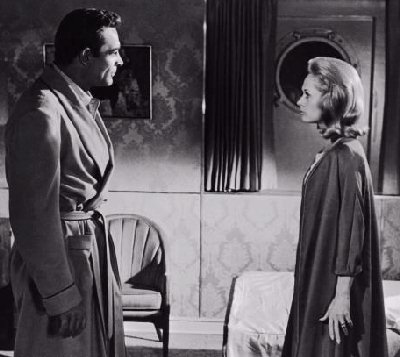
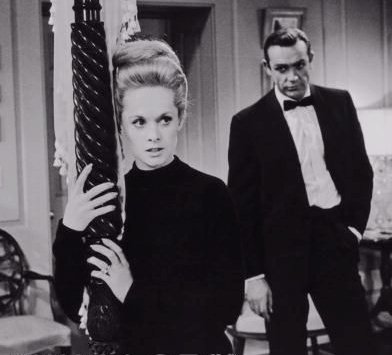 There are then two aspects to visual pleasure which are negotiated through sexual difference: the voyeuristic-scopophilic gaze and narcissistic identification. Both these formative structures depend for their meaning upon the controlling power of the male character as well as on the objectified representation of the female character. Moreover, according to Mulvey, in psychoanalytic terms the image of 'woman' is fundamentally ambiguous in that it combines attraction and seduction with an evocation of castration anxiety. Because her appearance also reminds the male subject of the lack of a penis, the female character is a source of much deeper fears. Classical cinema solves the threat of castration in one of two ways: in the narrative structure or through fetishism. To allay the threat of castration on the level of narrative, the female character has to be found guilty. The films of Alfred Hitchcock are a good example of this kind of narrative plot (see Modleski 1988). The woman's 'guilt' will be sealed by either punishment or salvation and the film story is then resolved through the two traditional endings which are made available to women: she must either die (as in e.g. Psycho (1960)) or marry (as in e.g. Marnie (1964)). In this respect, Mulvey provocatively says that a story demands sadism.
There are then two aspects to visual pleasure which are negotiated through sexual difference: the voyeuristic-scopophilic gaze and narcissistic identification. Both these formative structures depend for their meaning upon the controlling power of the male character as well as on the objectified representation of the female character. Moreover, according to Mulvey, in psychoanalytic terms the image of 'woman' is fundamentally ambiguous in that it combines attraction and seduction with an evocation of castration anxiety. Because her appearance also reminds the male subject of the lack of a penis, the female character is a source of much deeper fears. Classical cinema solves the threat of castration in one of two ways: in the narrative structure or through fetishism. To allay the threat of castration on the level of narrative, the female character has to be found guilty. The films of Alfred Hitchcock are a good example of this kind of narrative plot (see Modleski 1988). The woman's 'guilt' will be sealed by either punishment or salvation and the film story is then resolved through the two traditional endings which are made available to women: she must either die (as in e.g. Psycho (1960)) or marry (as in e.g. Marnie (1964)). In this respect, Mulvey provocatively says that a story demands sadism.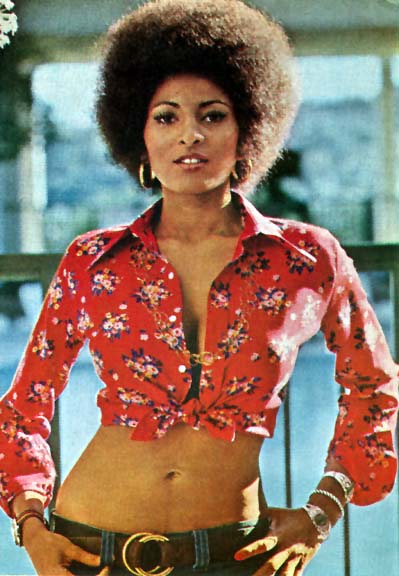
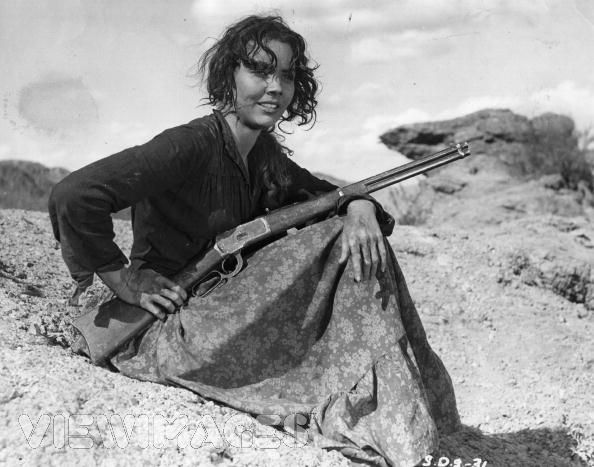 The account of 'the male gaze' as a structuring logic in Western visual culture became controversial in the early 1980s, as it made no room for the female spectator nor for a female gaze. Yet, women did and do go to the movies. Mulvey was much criticized for omitting the question of female spectatorship. In a later essay (1981/1989), she addressed the vicissitudes of female spectatorship in her analysis of the western Duel in the Sun (King Vidor, 1946). Mulvey suggests that the female spectator may not only identify with the slot of passive femininity which has been programmed for her, but is also likely to enjoy adopting the masculine point of view. Mulvey elaborates on the notion of transsexual identification and spectatorship by pointing to the pre-oedipal and phallic fantasy of omnipotence which for girls is equally active as for boys, and hence, in a Freudian perspective, essentially 'masculine'. In order to acquire 'proper' femininity, women will have to shed that active aspect of their early sexuality. Mulvey speculates that female spectators may negotiate the masculinisation of the spectatorial position in Hollywood cinema, because it signifies for them a pleasurable rediscovery of a lost aspect of their sexual identity. Even so, the female spectator remains 'restless in [her] transvestite clothes' (37) .
The account of 'the male gaze' as a structuring logic in Western visual culture became controversial in the early 1980s, as it made no room for the female spectator nor for a female gaze. Yet, women did and do go to the movies. Mulvey was much criticized for omitting the question of female spectatorship. In a later essay (1981/1989), she addressed the vicissitudes of female spectatorship in her analysis of the western Duel in the Sun (King Vidor, 1946). Mulvey suggests that the female spectator may not only identify with the slot of passive femininity which has been programmed for her, but is also likely to enjoy adopting the masculine point of view. Mulvey elaborates on the notion of transsexual identification and spectatorship by pointing to the pre-oedipal and phallic fantasy of omnipotence which for girls is equally active as for boys, and hence, in a Freudian perspective, essentially 'masculine'. In order to acquire 'proper' femininity, women will have to shed that active aspect of their early sexuality. Mulvey speculates that female spectators may negotiate the masculinisation of the spectatorial position in Hollywood cinema, because it signifies for them a pleasurable rediscovery of a lost aspect of their sexual identity. Even so, the female spectator remains 'restless in [her] transvestite clothes' (37) .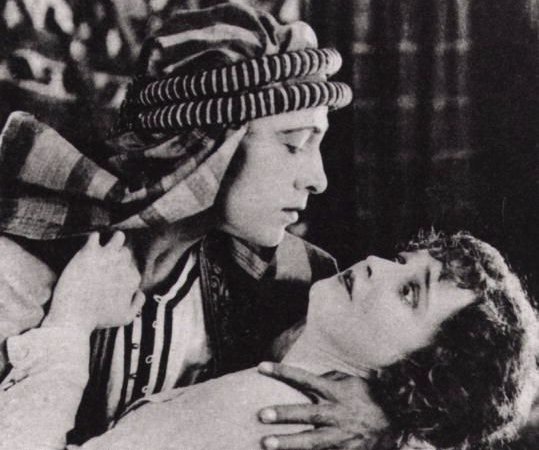 The masquerade
The masquerade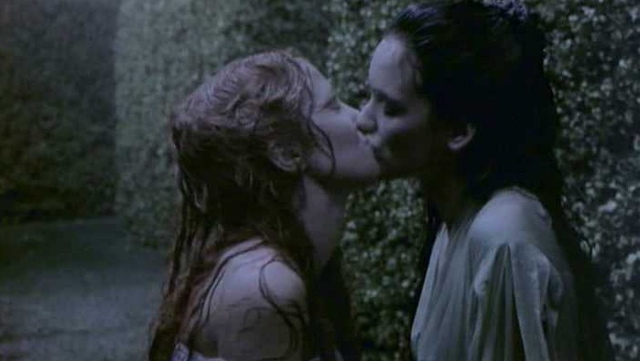 The female look
The female look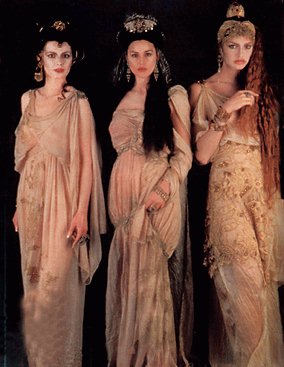
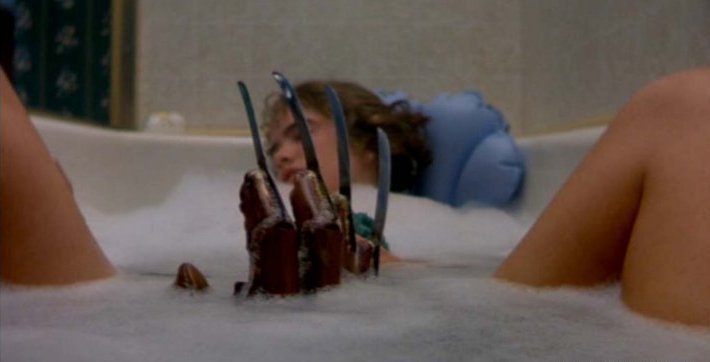 Bisexual identification has also submerged in studies of very different film genres. In her study of the modern horror film, Carol Clover (1992) argues that both female and male spectators identify bisexually. She rests her case on the narrative role of the 'Final Girl': the one girl in the film who fights, resists and survives the killer-monster. The Final Girl acquires the gaze, and dominates the action, and is thus masculinised. The slasher film, like Halloween (1978), Friday the Thirteenth (1980) and Nightmare on Elm Street (1984) (and their sequels), openly plays on a difference between apperance (
Bisexual identification has also submerged in studies of very different film genres. In her study of the modern horror film, Carol Clover (1992) argues that both female and male spectators identify bisexually. She rests her case on the narrative role of the 'Final Girl': the one girl in the film who fights, resists and survives the killer-monster. The Final Girl acquires the gaze, and dominates the action, and is thus masculinised. The slasher film, like Halloween (1978), Friday the Thirteenth (1980) and Nightmare on Elm Street (1984) (and their sequels), openly plays on a difference between apperance (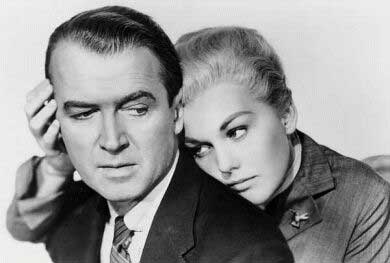 Female subjectivity
Female subjectivity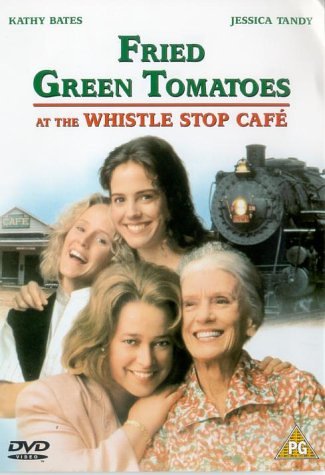 Sexual Difference and Its Discontents
Sexual Difference and Its Discontents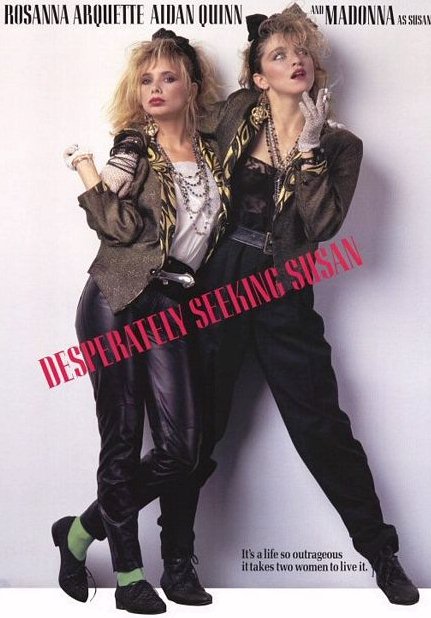 Stacey (1987) argues that in Hollywoodfilms with two female protagonists, like All About Eve (USA 1950) or Desperately Seeking Susan (USA 1984), an active desire is produced by the difference between the two women. These stories are about women wanting to become the idealized other. An interplay of difference and otherness prevents the collapse of that desire into identification, prompting Stacey to argue that the rigid psychoanalytic distinction between desire and identification fails to address different constructions of desire. She suggests that a more flexible model of cinematic spectatorship is needed so as to avoid a facile binarism that maps homosexuality onto an opposition of masculinity and femininity.
Stacey (1987) argues that in Hollywoodfilms with two female protagonists, like All About Eve (USA 1950) or Desperately Seeking Susan (USA 1984), an active desire is produced by the difference between the two women. These stories are about women wanting to become the idealized other. An interplay of difference and otherness prevents the collapse of that desire into identification, prompting Stacey to argue that the rigid psychoanalytic distinction between desire and identification fails to address different constructions of desire. She suggests that a more flexible model of cinematic spectatorship is needed so as to avoid a facile binarism that maps homosexuality onto an opposition of masculinity and femininity. Gay and lesbian criticism
Gay and lesbian criticism Feminist Theory and Race
Feminist Theory and Race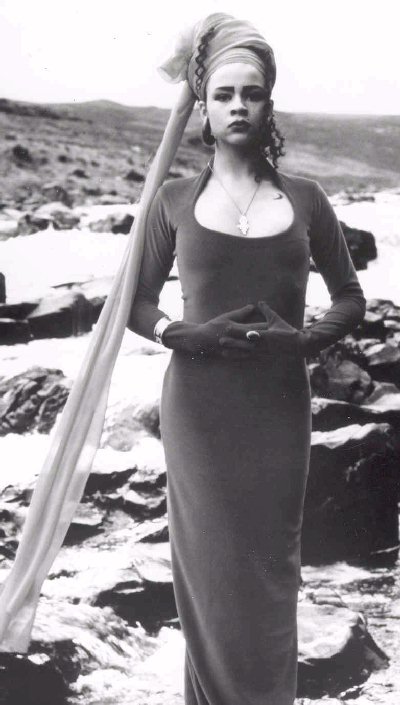 The influential feminist critic bell hooks (1990, 1992 and 1994) confirms that black viewers have always critically responded to Hollywood. Black female spectators do not necessarily identify with either the male gaze or with white womanhood as lack. Rather, they 'construct a theory of looking relations where cinematic visual delight is the pleasure of interrogation' (1992: 126). For hooks this is a radical departure from the 'totalizing agenda' of feminist film criticism, and the beginning of an oppositional spectatorship for black women.
The influential feminist critic bell hooks (1990, 1992 and 1994) confirms that black viewers have always critically responded to Hollywood. Black female spectators do not necessarily identify with either the male gaze or with white womanhood as lack. Rather, they 'construct a theory of looking relations where cinematic visual delight is the pleasure of interrogation' (1992: 126). For hooks this is a radical departure from the 'totalizing agenda' of feminist film criticism, and the beginning of an oppositional spectatorship for black women. 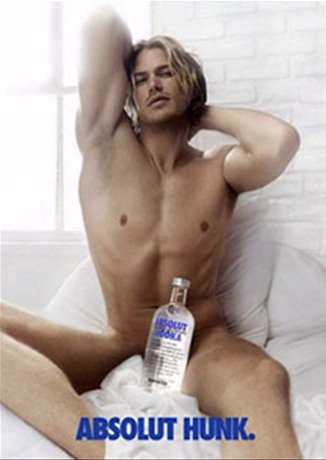 The image of the male body as object of a look is fraught with ambivalences, repressions and denials. Like the masquerade, the notion of spectacle has such strong feminine connotations that for a male performer to be put on display or to don a mask threatens his very masculinity. Because the phallus is a symbol and a signifier, no man can fully symbolize it. Although the patriarchal male subject has a privileged relation to the phallus, he will always fall short of the phallic ideal. Lacan notices this effect in his essay on the meaning of the phallus '... the curious consequence of making virile display in the human being itself seem feminine' (1977: 291). Male spectacle, then, entails to be put in a feminine position. The immanent feminization of male spectacle brings about two possible dangers for the posing or performing male: functioning as an object of desire he can easily become the object of ridicule, and within a heterosexist culture accusations of homosexuality can be launched against him (Neale 1983, Tasker 1993).
The image of the male body as object of a look is fraught with ambivalences, repressions and denials. Like the masquerade, the notion of spectacle has such strong feminine connotations that for a male performer to be put on display or to don a mask threatens his very masculinity. Because the phallus is a symbol and a signifier, no man can fully symbolize it. Although the patriarchal male subject has a privileged relation to the phallus, he will always fall short of the phallic ideal. Lacan notices this effect in his essay on the meaning of the phallus '... the curious consequence of making virile display in the human being itself seem feminine' (1977: 291). Male spectacle, then, entails to be put in a feminine position. The immanent feminization of male spectacle brings about two possible dangers for the posing or performing male: functioning as an object of desire he can easily become the object of ridicule, and within a heterosexist culture accusations of homosexuality can be launched against him (Neale 1983, Tasker 1993). 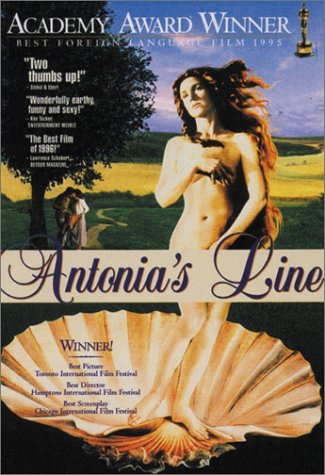 The diversity of contemporary feminist film theory reflects the variegated production of women's cinema of the 1990s. Women filmmakers have increasingly conquered Hollywood. Several of them have been able to maintain a consistent production in diverse genres: comedy (Penny Marshal), romantic drama (Nora Ephron), and action movies (Kathryn Bigelow), to name just a few. This has also been the case for several women filmmakers in Europe, such as Margarethe von Trotta (Germany), Claire Denis (France) and Marion Hensel (Belgium). In a more non-commercial pocket of the market, there has been a significant increase in films made by lesbian, black and post-colonial directors: filmmakers as diverse as Monika Treut and Patricia Rozema, Julie Dash and Ngozi Onwurah, Ann Hui and Clara Law. This decade has witnessed the popular success of feminist art films, like Orlando by Sally Potter (1992) and the Oscar-winning films The Piano , a costume drama by Jane Campion (New Zealand 1994) and Antonia's Line , a matriarchal epic by Marleen Gorris (Netherlands 1995). Dropping a few names and titles does in no way do justice to the scale of women's cinema of this decade. It merely indicates a prolific diversity which resonates with film audiences in this decade of hybridity. The polyphony of voices, multiple points of view, and cinematic styles and genres, signify women's successful struggle for self-representation on the silver screen.
The diversity of contemporary feminist film theory reflects the variegated production of women's cinema of the 1990s. Women filmmakers have increasingly conquered Hollywood. Several of them have been able to maintain a consistent production in diverse genres: comedy (Penny Marshal), romantic drama (Nora Ephron), and action movies (Kathryn Bigelow), to name just a few. This has also been the case for several women filmmakers in Europe, such as Margarethe von Trotta (Germany), Claire Denis (France) and Marion Hensel (Belgium). In a more non-commercial pocket of the market, there has been a significant increase in films made by lesbian, black and post-colonial directors: filmmakers as diverse as Monika Treut and Patricia Rozema, Julie Dash and Ngozi Onwurah, Ann Hui and Clara Law. This decade has witnessed the popular success of feminist art films, like Orlando by Sally Potter (1992) and the Oscar-winning films The Piano , a costume drama by Jane Campion (New Zealand 1994) and Antonia's Line , a matriarchal epic by Marleen Gorris (Netherlands 1995). Dropping a few names and titles does in no way do justice to the scale of women's cinema of this decade. It merely indicates a prolific diversity which resonates with film audiences in this decade of hybridity. The polyphony of voices, multiple points of view, and cinematic styles and genres, signify women's successful struggle for self-representation on the silver screen.
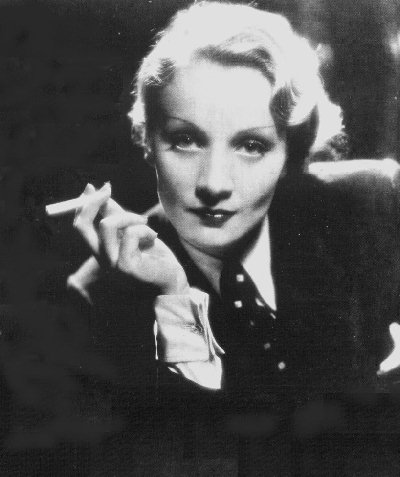 For Laura Mulvey (1975/1989) too, Marlene Dietrich is the ultimate (Freudian) fetish in the cycle of von Sternberg's films. In order to disavow the castration anxiety that the female figure evokes, she is turned into a fetish; a perfected object of beauty which is satisfying rather than threatening. In this respect, it is significant that von Sternberg produces the perfect fetish by playing down the illusion of screen depth; the image of the fetishised woman and the screen space coalesce. In this kind of 'fetishistic scopophilia' the flawless icon of female beauty stops the flow of action and breaks down the controlling look of the male protagonist. The fetish object is displayed for the immediate gaze and enjoyment of the male spectator without mediation of the male screen character. For example, at the end of Morocco, Tom Brown has already disappeared into the desert when Amy Jolly kicks off her gold sandals and walks after him into the Sahara. The erotic image of the fetishised woman is established in direct rapport with the spectator. The male hero, says Mulvey, does not know or see (22-3).
For Laura Mulvey (1975/1989) too, Marlene Dietrich is the ultimate (Freudian) fetish in the cycle of von Sternberg's films. In order to disavow the castration anxiety that the female figure evokes, she is turned into a fetish; a perfected object of beauty which is satisfying rather than threatening. In this respect, it is significant that von Sternberg produces the perfect fetish by playing down the illusion of screen depth; the image of the fetishised woman and the screen space coalesce. In this kind of 'fetishistic scopophilia' the flawless icon of female beauty stops the flow of action and breaks down the controlling look of the male protagonist. The fetish object is displayed for the immediate gaze and enjoyment of the male spectator without mediation of the male screen character. For example, at the end of Morocco, Tom Brown has already disappeared into the desert when Amy Jolly kicks off her gold sandals and walks after him into the Sahara. The erotic image of the fetishised woman is established in direct rapport with the spectator. The male hero, says Mulvey, does not know or see (22-3). Bibliography
Bibliography